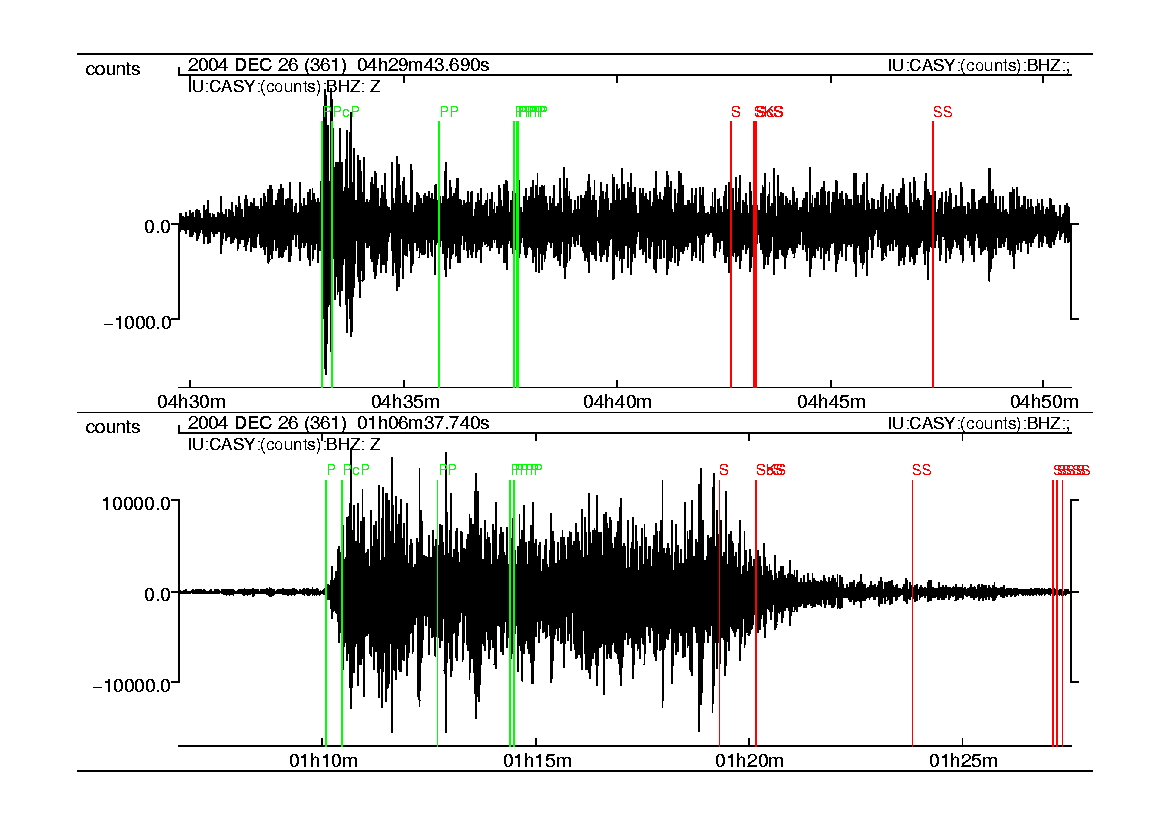
Each of the following figures show
1-sec Gaussian filtered BHZ component seismograms at a single station
from a large aftershock (M=7.5, 2004 Dec 26 04:21, upper trace) and
from the 2004 Dec 26 mainshock (lower trace). Also shown are the
predicted P-group arrivals (green) and S-group arrivals (red) for the
corresponding hypocenter.
Note that there is little or no
signal from later phases (PcP, PP, S, etc) visible above the level of
the P coda for the aftershock. This provided evidence that the
1-sec Gaussian filtered traces from the mainshock show energy primarily
from the direct P arrival. Consequently we can interpret the end
of the 1-sec signal as direct P energy radiated from the area of
termination of rupture of the mainshock.




Anthony Lomax, Anthony Lomax Scientific Software, Mouans-Sartoux, France, anthony@alomax.net, www.alomax.net